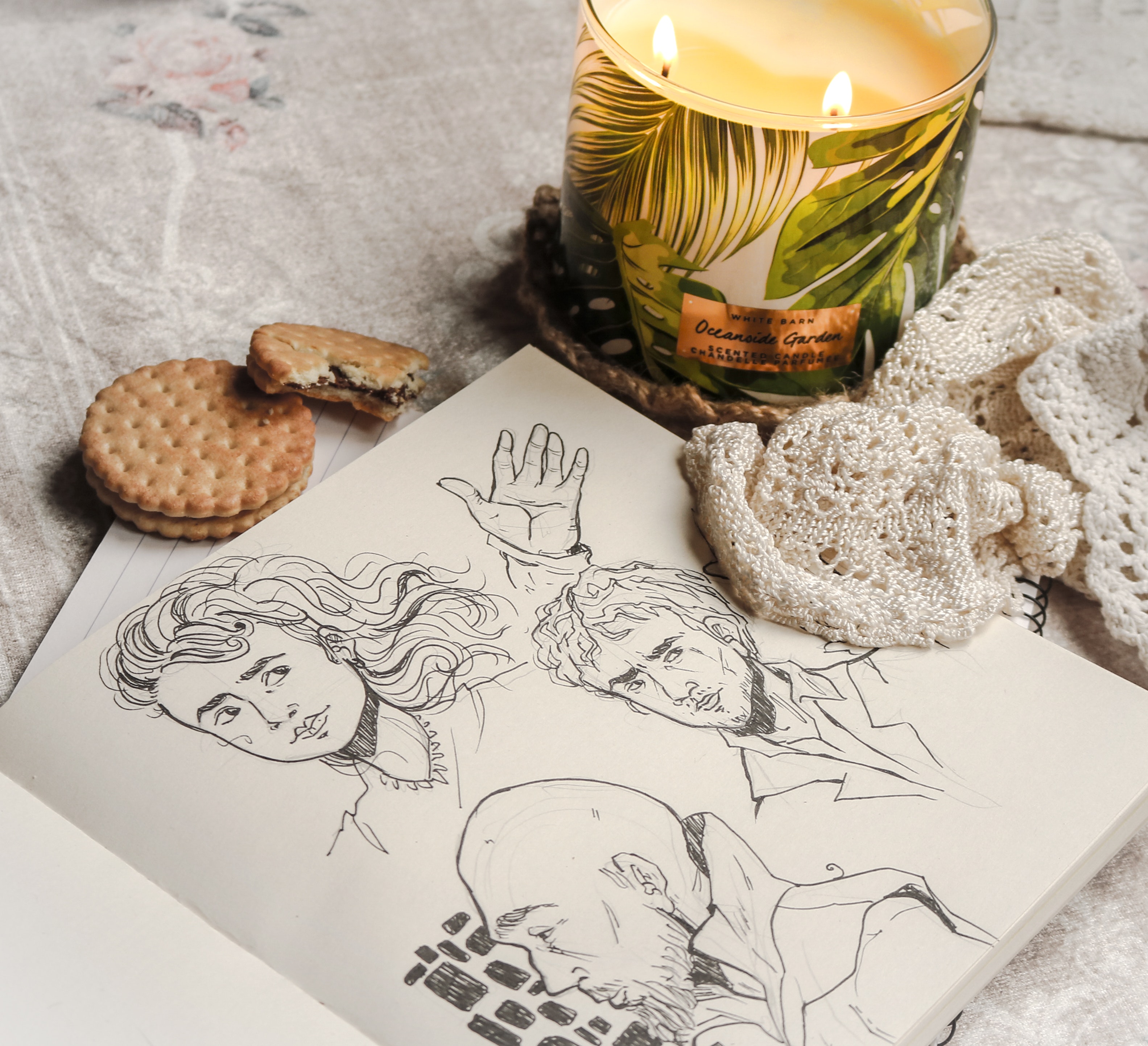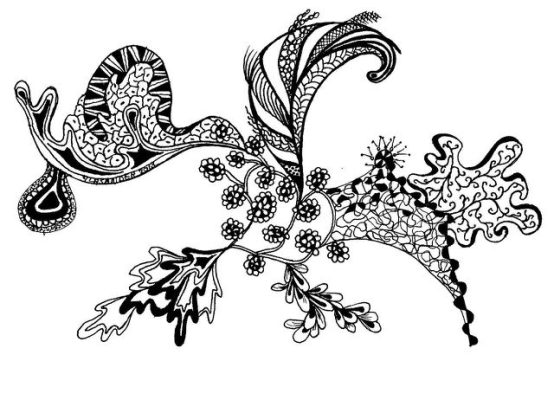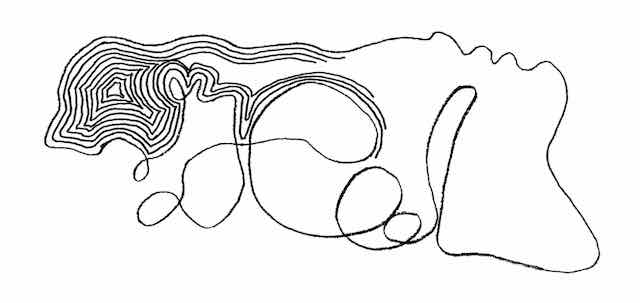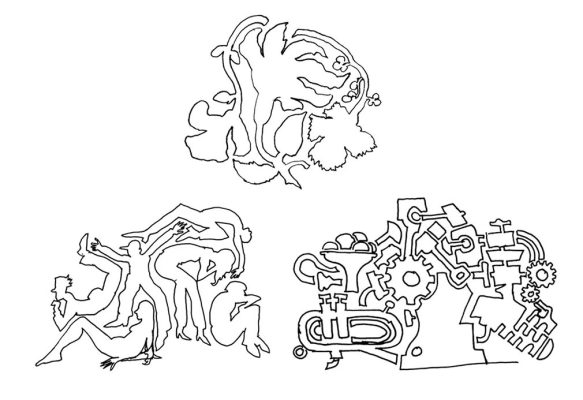https://nasacademy.com/blog/article/what-to-draw-for-beginners

If you want to learn to draw from your imagination, but have no idea what to draw, or where to even start – don’t worry! There are many different drawing tips, drawing techniques and exercises you can do to practice drawing from your minds eye. And although drawing from the imagination may sound advanced and like it’s only for the pros – it’s really not as difficult as you might think.
And we’re going to prove it!
We’ve rounded up some simple, easy drawing ideas to help you start practicing. These drawing ideas are great if you are a beginner and don’t know what to draw to harness your imaginative drawing skills, or if you are simply looking for some cool drawing ideas, or sketchbook inspiration to get your creative energy flowing.
If you take the time to practice and have a little faith in yourself – you’ll be connecting your imagination to your artwork, and bringing your wildest ideas to life in no time.
Drawing from the imagination is basically just drawing from memory.
When you learn to draw from the imagination, you are pulling from your long-term memory and connecting things that you’ve seen and experienced throughout your life. You take your unique interpretation of different things you’ve witnessed, heard, felt, and noticed – and you combine it all together to create something new.
Even if two people see the same image or experience the same event, they would each connect things differently and interpret it according to their individual perspective.
So, no matter what, no two works will ever be the same. That’s what gives each of us our own, unique style – and it’s what will make your work stand out from the rest.
This is the magic of drawing from the imagination. But… letting your creativity run wild doesn’t always come easily.
So, here are some simple ideas on what to draw as you’re getting started:
A great way to practice drawing from your imagination is to practice drawing from specific memories.
There are a couple of different ways that you can do this exercise:

For this exercise, grab a photo of a family or close friend.
Give yourself a couple of minutes to look it over. And once the time’s up, put the photo away, pick up your pencil and paper, and start drawing! See how much you can remember and draw the same portrait of them to the best of your abilities.
You can also do this exercise with a group to make it more interesting. This way, you’ll really be able to see the differences in how you all perceive and remember the same image.
To do it as a group, sit together in a room and decide on a person that you all know equally as well, but who isn’t in the room with you. Together, look at a photo of that person for a moment. Then, put it away and start drawing.
Set yourselves a time limit of 5 to 10 minutes, and see what each of you comes up with!
Notice the differences between what you drew and what everyone else drew. What did you forget? What did you remember?
For this drawing idea, try drawing your favorite TV or video game character from memory. But this time, do it without looking at a picture first. This way, you will have to remember what to draw to bring that character to life, only using your long-term memory.
Consider what stands out about the character, and what you remember most when you think of them. Think about everything from their clothes, their facial expressions t0 how they wear their hair and the way that they stand.
Think of every small feature you can, and see how much you can include in your drawing. When you practice remembering small details like this, you’ll learn to draw your very own characters and pictures with just as much precision.
And if you want to take it a step further, you could even draw an interpretation of the character by exaggerating their features to match their personality. When you’re thinking of what to draw for this, consider drawing details that represent and highlight that characters personality. For example, maybe that character likes to talk more than they listen – so you might draw their mouth twice as large as their head.
You could even do this with yourself as a self-portrait. Turn yourself into a character or cartoon and find a way to reflect aspects of your personality in the drawing.
Creating exaggerated drawings like this can really help you connect symbolism with your imagination to tell help you tell a story.
We’ve all had those sleepless nights or lazy mornings where we lay in bed, counting the number of flowers on our bedroom wallpaper. Or we trace the outlines of our dressers with our eyes. We notice the tree out our window, or the same paint blob on our ceiling from that bad paint-job we did.
A clear image of your own room probably popped into your head as you read that, didn’t it?
If it did, pick that space. If you didn’t get a clear image, pick another one that is just as familiar to you. You might have a regular spot you pass on your route to work, or a nice view out the window of your office. Wherever it may be, put yourself back in the exact position you are usually in.
What do you see? What does the space around you look like?
Try and draw from your memory, and draw it without actually being in that space. We notice a lot when we’re consistently in the same places, even if we’re not aware of it while we’re there.
This exercise is also a great way to pull on your memory and show you how to notice fine detail. It teaches you how to get in touch with those memories, interpret them, and focus on trusting rather than perfecting – which is one of the most helpful drawing skills you can learn.
When we trust our mind and let it do its work, it’s much more likely to cooperate and show us what we’re looking for when we’re stuck on what to draw next.
One of the easy drawing ideas experts use to help exercise their imagination, is drawing with augmented reality. In other words, creating something that builds off of what’s already in front of you.
You could do this in many different ways.
For example, you could get somebody to pose for you as a superhero. Then, sketch them in that position. When you’re done, add a costume, cape, and anything else you can imagine to turn them into an actual superhero. This will help you use your imagination to practice adding to what you see around you.
Try it out right now! Look at what’s around you, and think of things to draw to add on to what’s there. Is there an empty shelf or table near you? Draw something sitting on it. It could be a picture frame, a cat, an elf – anything!
Think about how it would create shadows on what’s around it. How would it influence the space?
This exercise can also help you better understand light and shadows, and forces you to practice creating fictional scenarios out of real life. Doing exercises like this can definitely lead you to creating some pretty cool drawings – and, it helps you get used to pulling on those imaginative ideas that are floating around your mind, and getting them down on the page.
If you really want to know what to draw to help test your imagination – then try this one. This exercise is known as the “360” method – in other words, it’s where you try drawing your subject from all sides without a reference.
Take a photo of a subject and draw it out on your paper. Now, imagine you were looking at the subject from a birds-eye view. What would it look like from up there? What would it look like if you were looking up from underneath it? What about beside it? At a 45 degree angle?
Think of all the different angles you could possibly draw your subject from, and see if you can do it entirely from your imagination. See if you can pull on your memory of how perspective and angles work together based on what you’ve seen in real life, or what you’ve seen in other pieces of work.
This is especially great to practice when learning how to draw with realism, to help you better understand shadows and shading.
If you want to be imaginative, or you’re ever stumped on what to draw one day, try out this blob challenge.
This drawing exercise is just like when you would lay down and stare up at the clouds as a kid, trying to spot familiar shapes, faces and pictures. But this time – you create the clouds. Just take your drawing utensil of choice, and create a series of random blobs and different shapes across your page. You can make them whatever color or size you want.
Now, let your creativity run wild! Look at each shape, see what it resembles in your mind, and find things to draw out of them. If you see too many images in one blob and don’t know which to go with, just pick the first thing you see and try it out.
There are no rules on what to draw or how to draw it. There’s no right or wrong. It’s all about practicing, finding things to draw with just your imagination, and simply experimenting.

(Source: ArtistsNetwork)
There are many different imaginative drawing ideas, drawing techniques and exercises to help you practice drawing from your imagination. But, oftentimes, relaxation and experimentation can be the greatest way to get in touch with your creative side.
It helps you calm down and notice the perspectives and styles that you’re most drawn to, without judgement or pressure.
If you want to know what to draw to practice relaxation and experimentation, try creating a Zentangle. They’re great for calming the mind and allowing your pen to run wild on the page without any rules.
To create a Zentangle, take a piece of paper and draw a tangle of shapes, dots, lines, and random images that are all intertwined together. There is no structure or rules to this. Some artists who create Zentangles don’t even use erasers – because it’s not about perfecting, it’s about accepting whatever comes out on the page.
It’s putting focus on “play,” and not worrying about mistakes. Often, when get stuck on what to draw, and start desperately trying to think of drawing ideas to get ourselves out of that rut – it’s because we’re trying too hard to create something groundbreaking. We get focused on creating something “good” that we createpressure and restrict our creativity.
One of the best drawing skills you can learn, is to simply notice when this happens, and let it go. Let yourself draw freely, and experience the simple joy of artistic expression. Take some time to allow yourself to create in a peaceful, non-judgemental way – and you might just find it leads to your best work.

(Source: ArtistsNetwork)
Similar to Zentangles, another great exercise is line drawing. Doodle a line in all different directions without lifting your pencil off the page. Just make sure the drawing comes to a close and creates a shape.
Once you’ve got a shape, you can just start filling it in – should you wish.
You can fill it with smaller shapes, patterns, lines, dots or whatever your heart desires. This exercise gives you a bit of structure, but also helps you practice your doodling skills and techniques so you can more easily pull on whatever magical drawing ideas are floating around in your brain.
 (Source: ArtistsNetwork)
(Source: ArtistsNetwork)
Another creative drawing exercise that is more structured (but still experimental) is to create shape clusters.
Pick a shape or a theme of shapes like gears or flowers – as seen in the images above – and draw them in clusters. Draw them as close together as you can, and leave the same space between each shape or doodle.
The idea is to create a tight, abstract image that works together to create a visually interesting design.
This helps to practice your design skills, helps you acknowledge space, and is just a great exercise for your brain to practice fitting things together into a single piece. It’s almost like a puzzle, where you’re trying to find what pieces to put where to make a complete image.
It can be really easy to start seeing our artwork as a chore and overwork ourselves trying to get better at it.
But really, research is proving that our best ideas actually come when we are resting.
“Neuroscience is finding that when we are idle, in leisure, our brains are most active. The Default Mode Network lights up, which, like airport hubs, connects parts of our brain that don’t typically communicate. So a stray thought, a random memory, an image can combine in novel ways to produce novel ideas.”
– Brigid Schulte, author of Overwhelmed: Work, Love, and Play When No One Has the Time.
Notice how you usually get your best ideas when you’re not at work? The spark of inspiration often hits us when we’re laying in bed at night, taking a shower, or walking down the street.
That’s because when we’re resting, we’re allowing our mind the space to make connections, remember things, connect concepts, and come up with creative ideas.
Resting and experimenting without consequence or structure is how we come up with solutions and learn to “work smart, not hard.” When you don’t know what to draw, sometimes it’s because you might feel forced into a box.
And when you’re forced into a box, you can’t learn to draw from the imagination. Remember what it is about drawing that got you here in the first place. Remember art is about creativity, expression and connection.
Learning to draw from the imagination is a great thing to practice, no matter what level you’re at in your craft. The practice of creating things out of nothing, and doing it just for the sake of doing it, is how you improve and become more innovative.
***
And if you’re looking for more tips and guidance on how to become a master at drawing from your imagination, the Anthony Francisco Academy is perfect for you!
Senior Visual Development Artist at Marvel Studios, Anthony Francisco, will walk you through his methods on how to draw from the imagination. He will take you all the way from beginner artist to mastering your own creative drawing style – all in just three, simple steps.
By Team Nas Academy
By Team Nas Academy